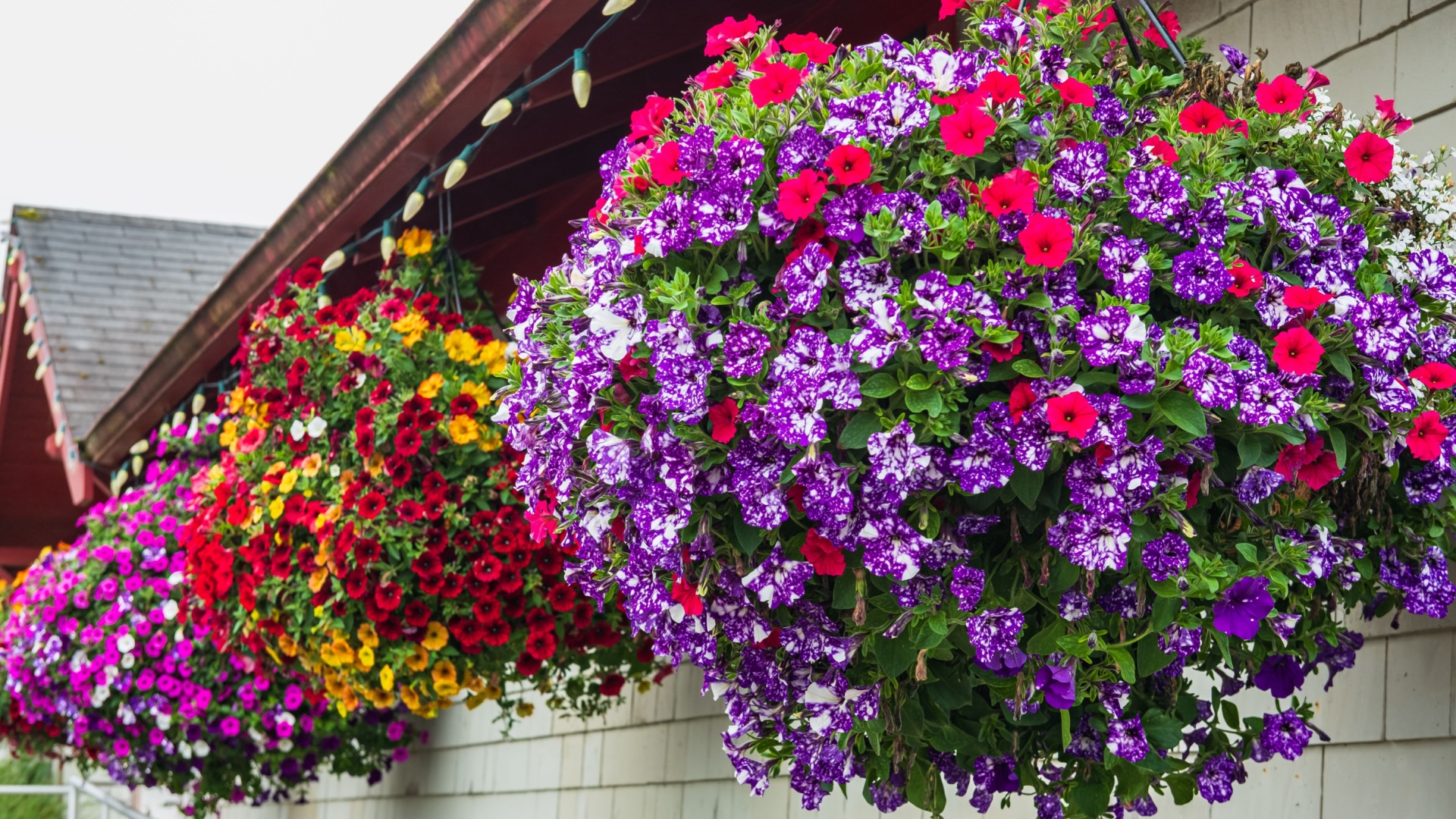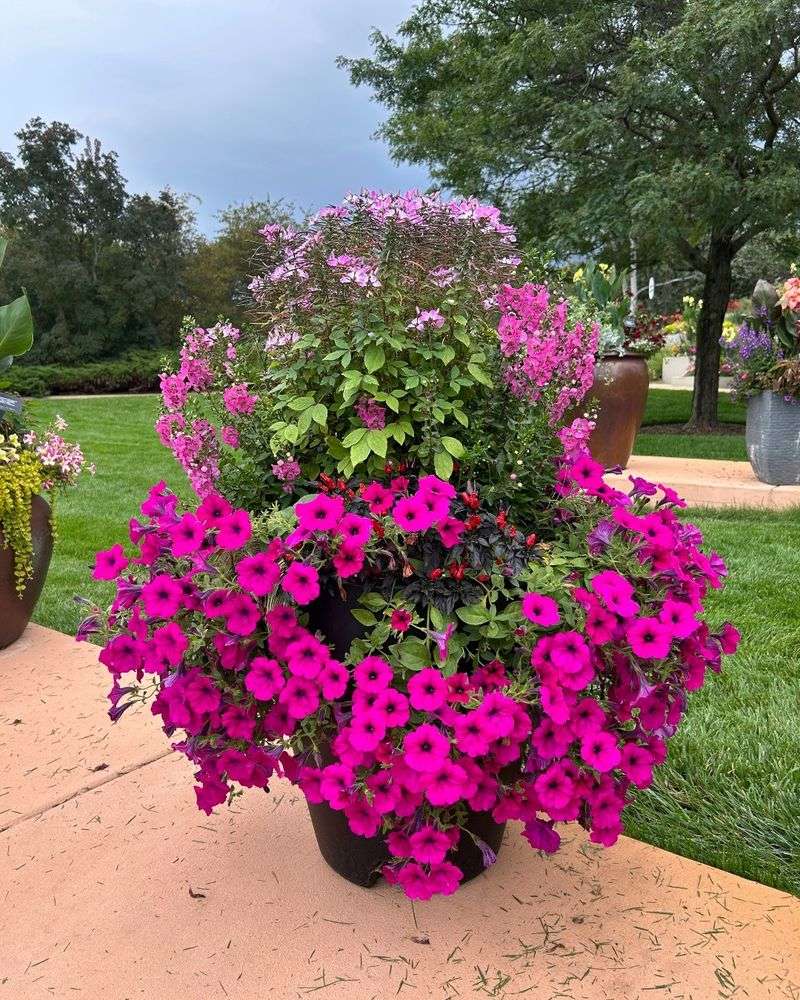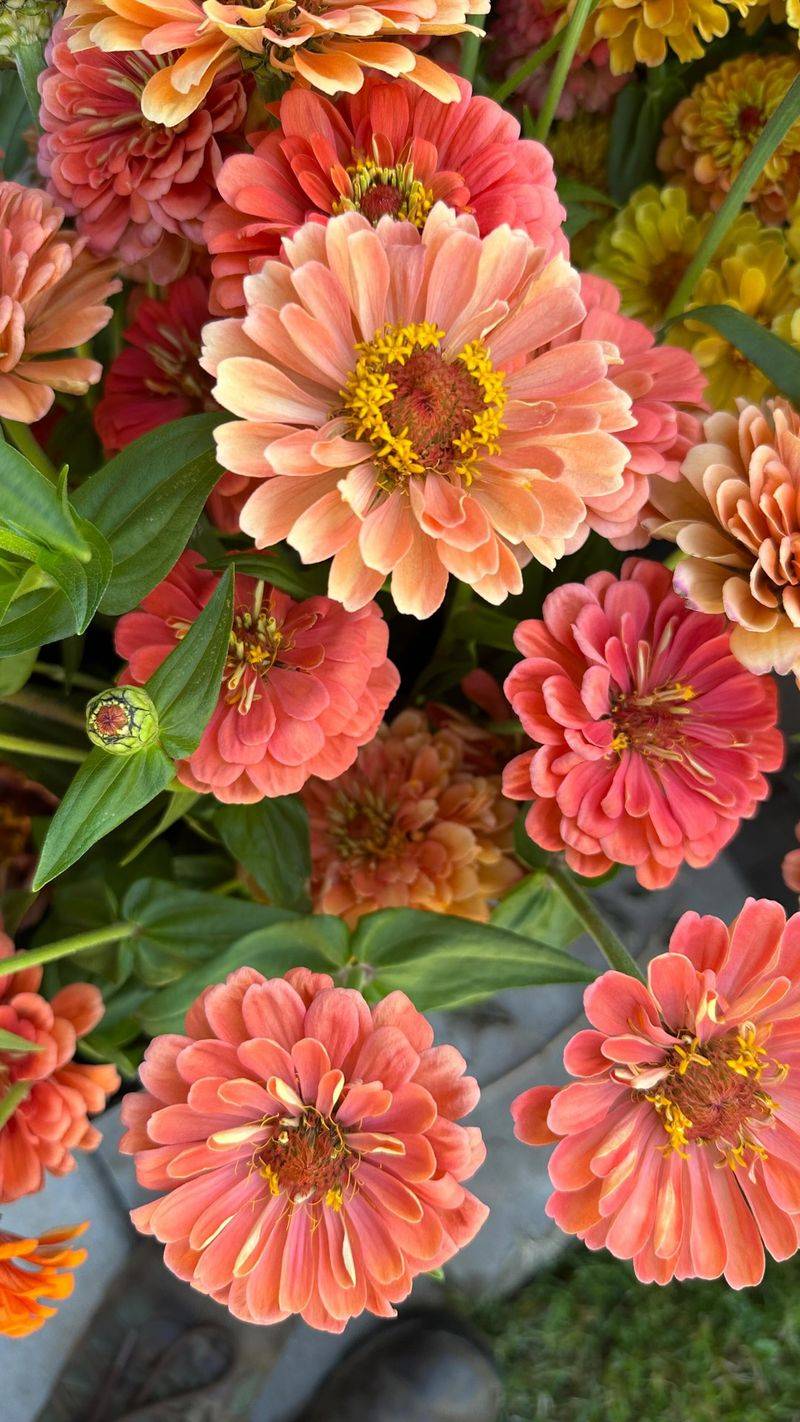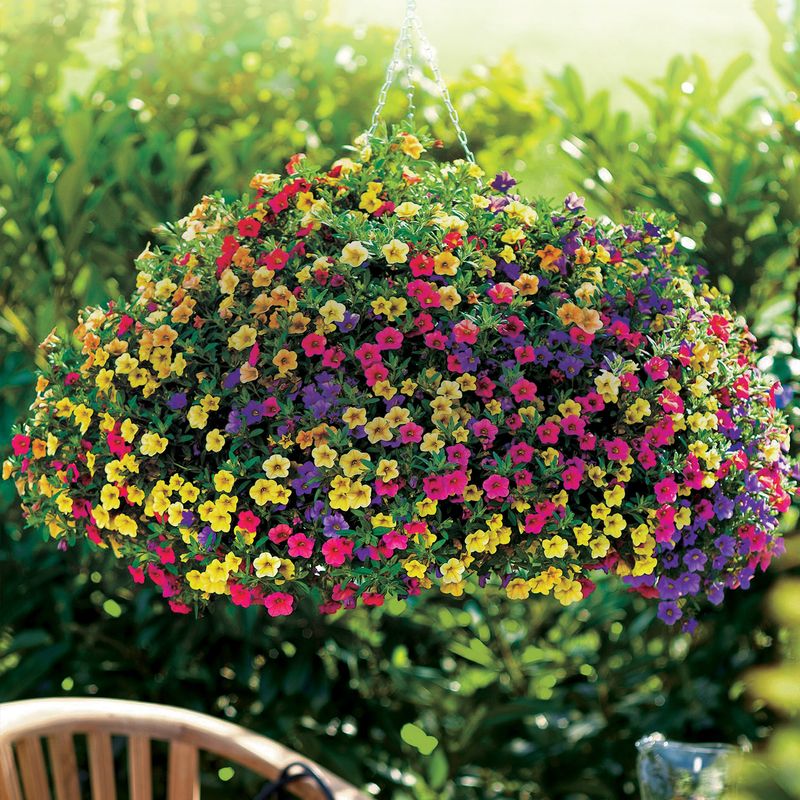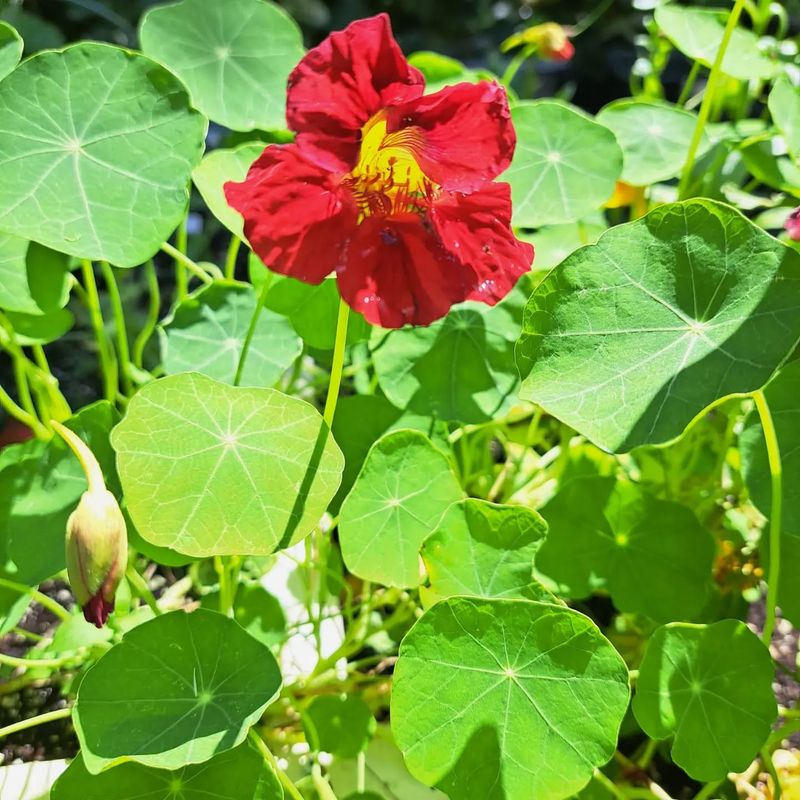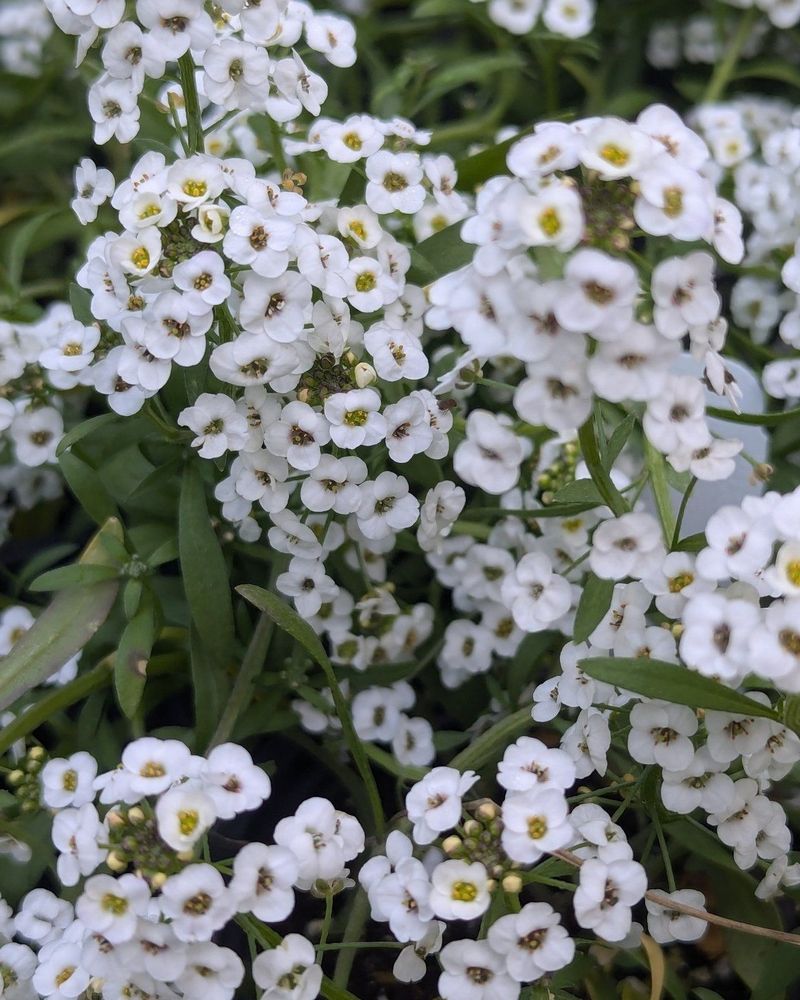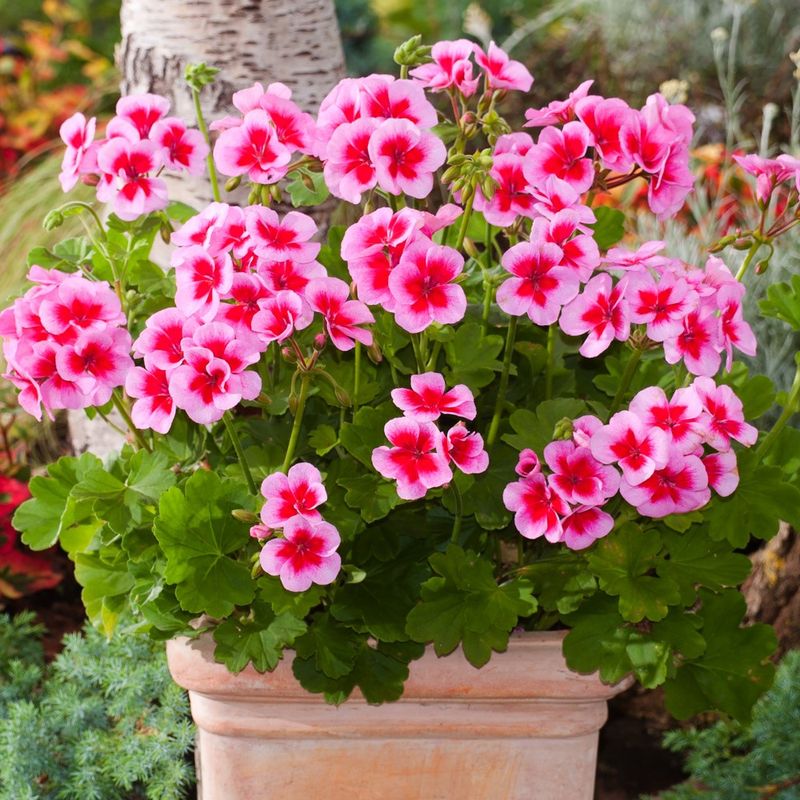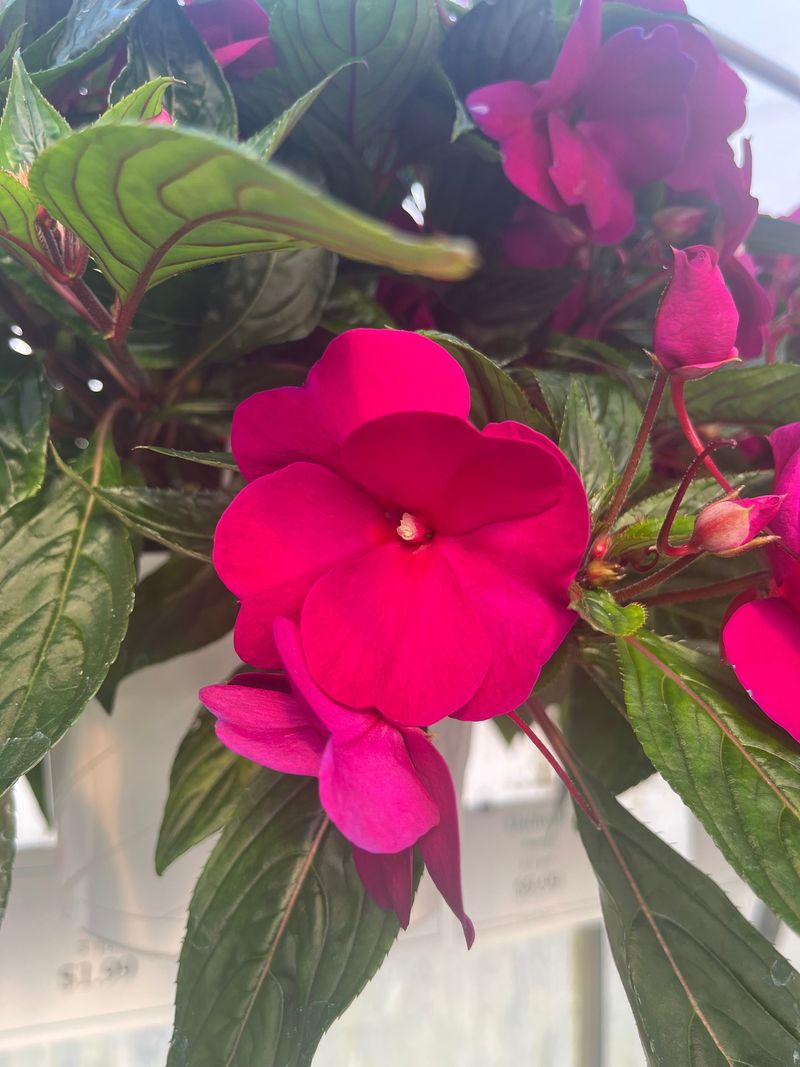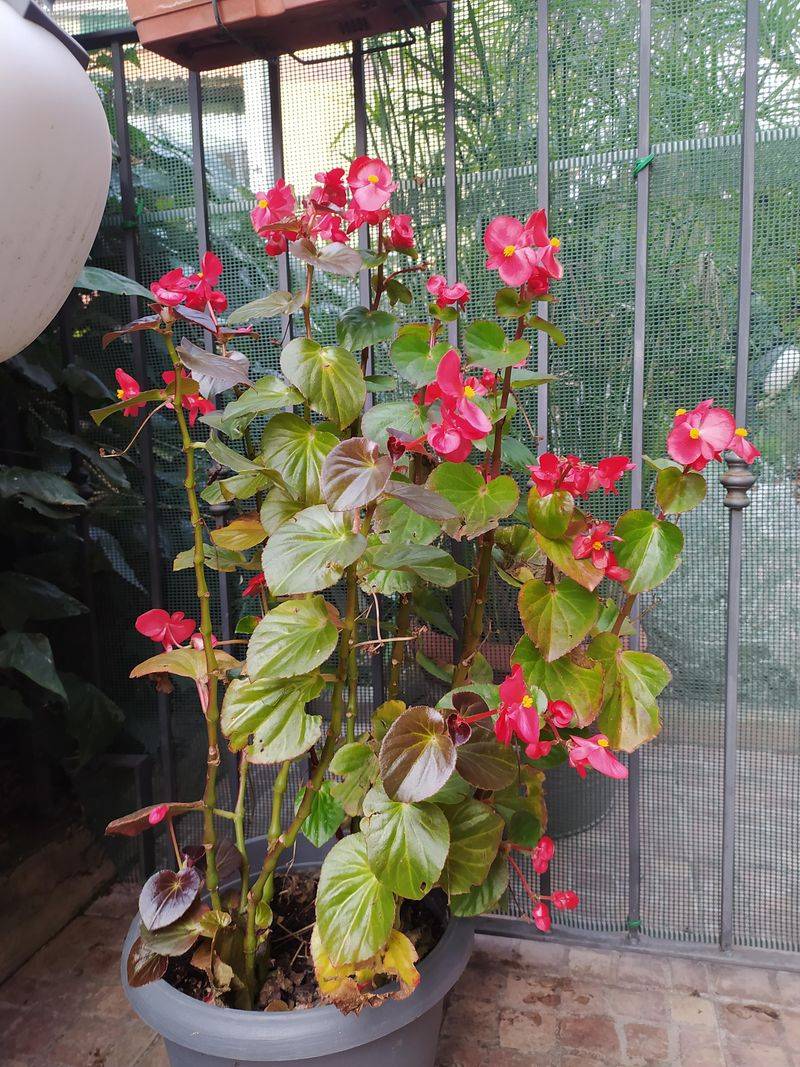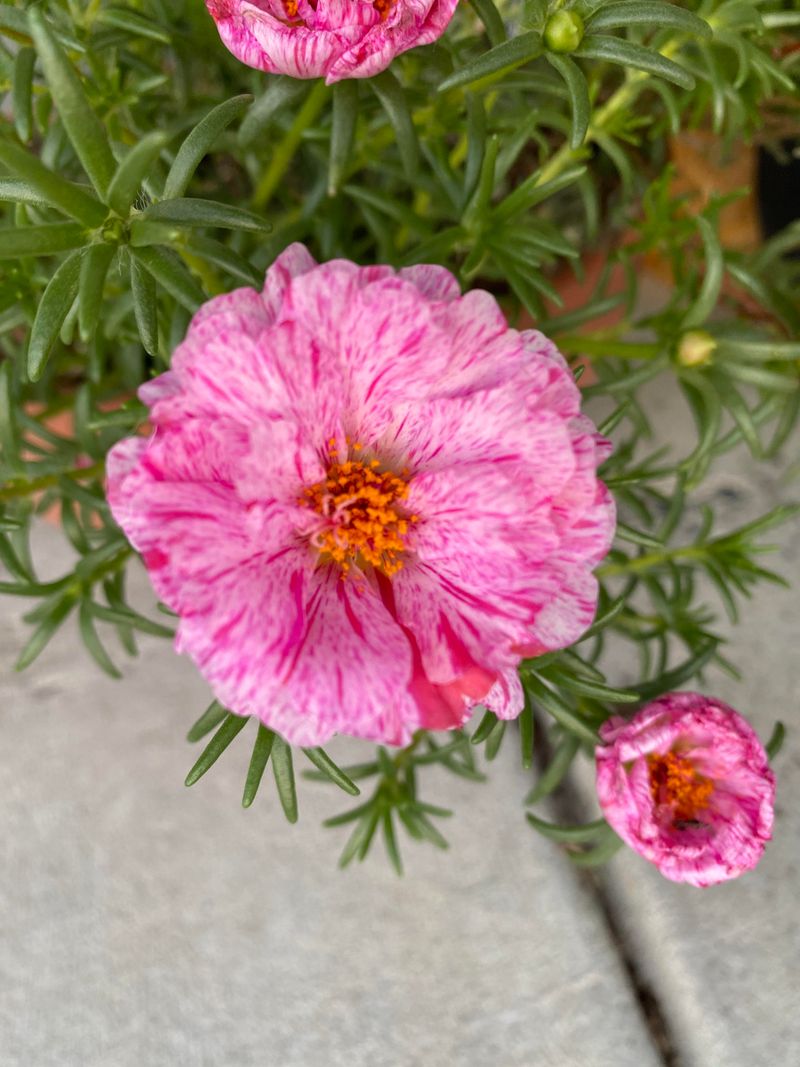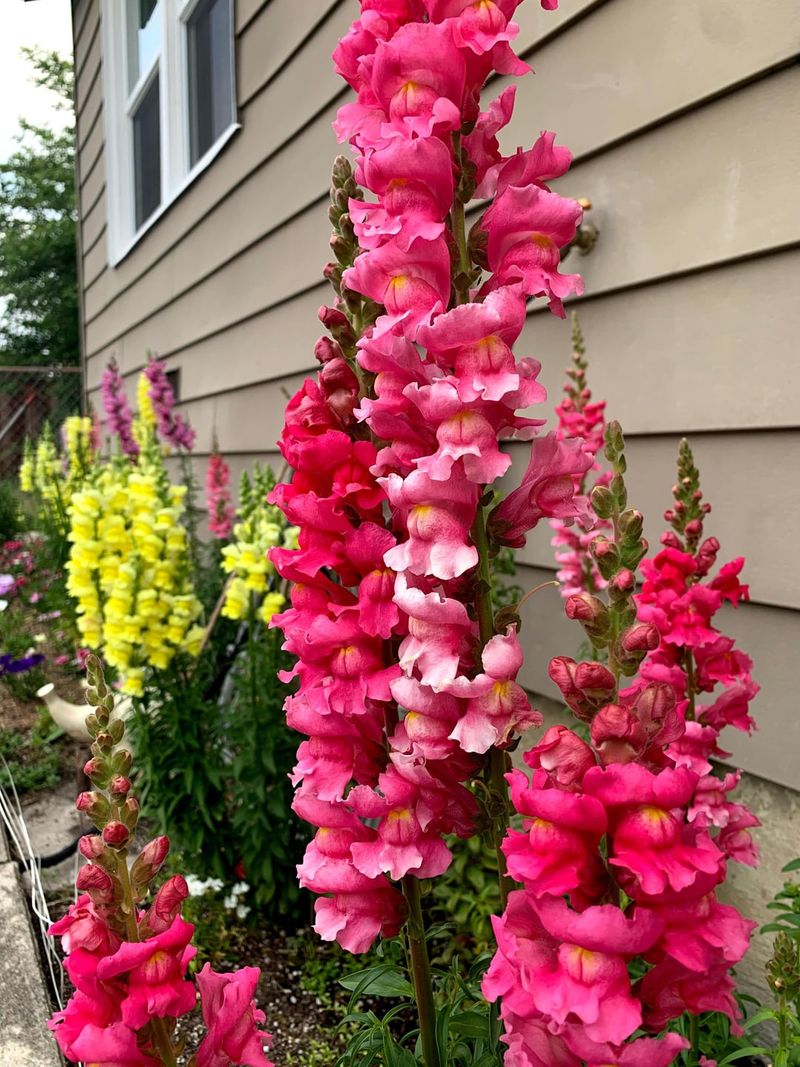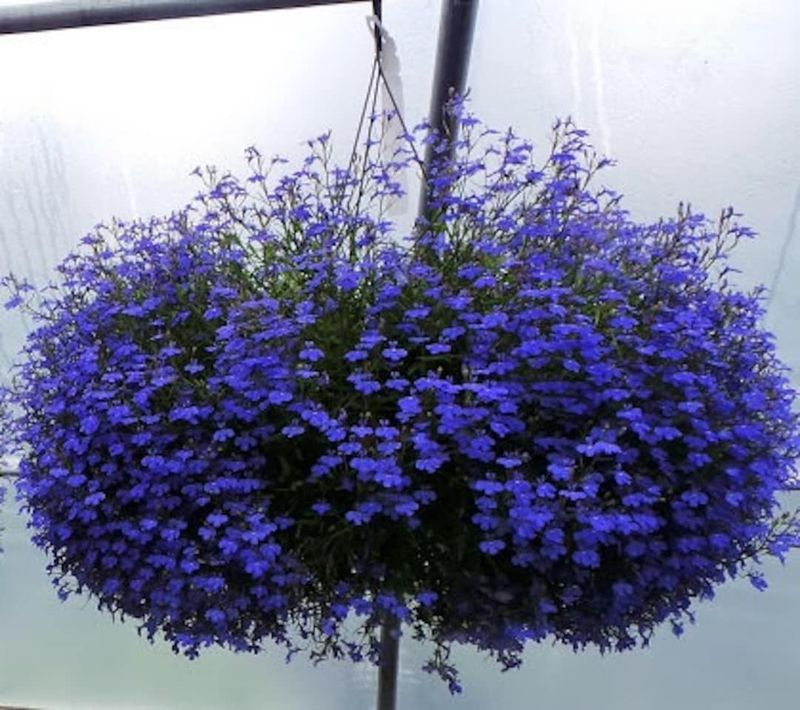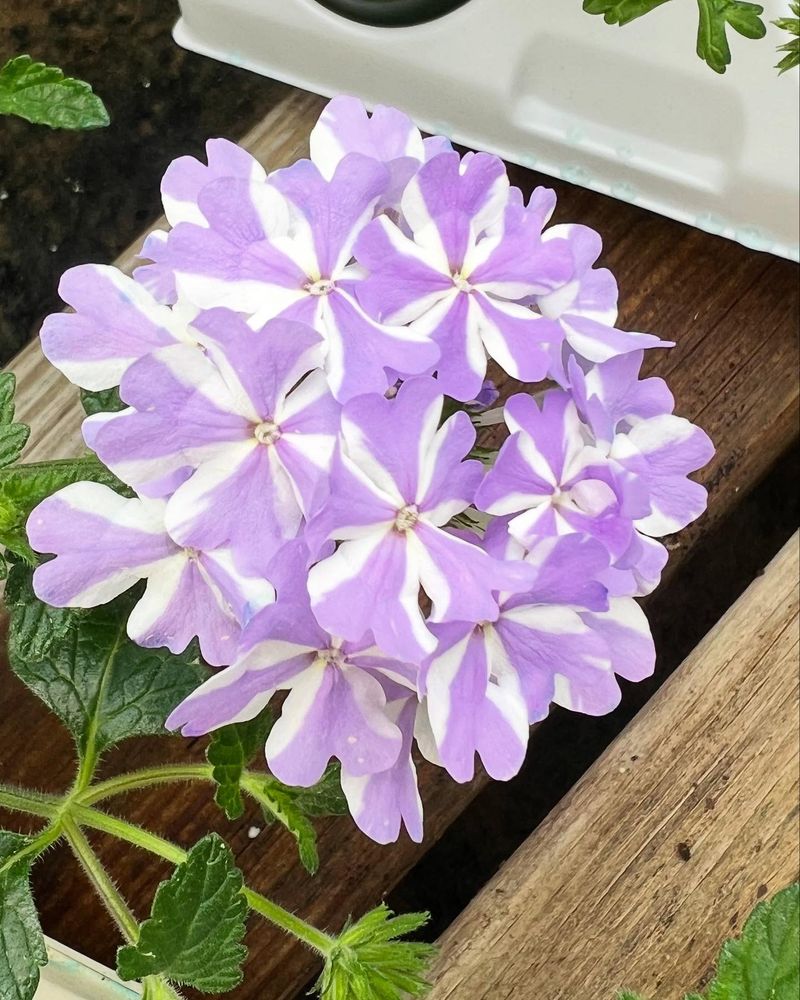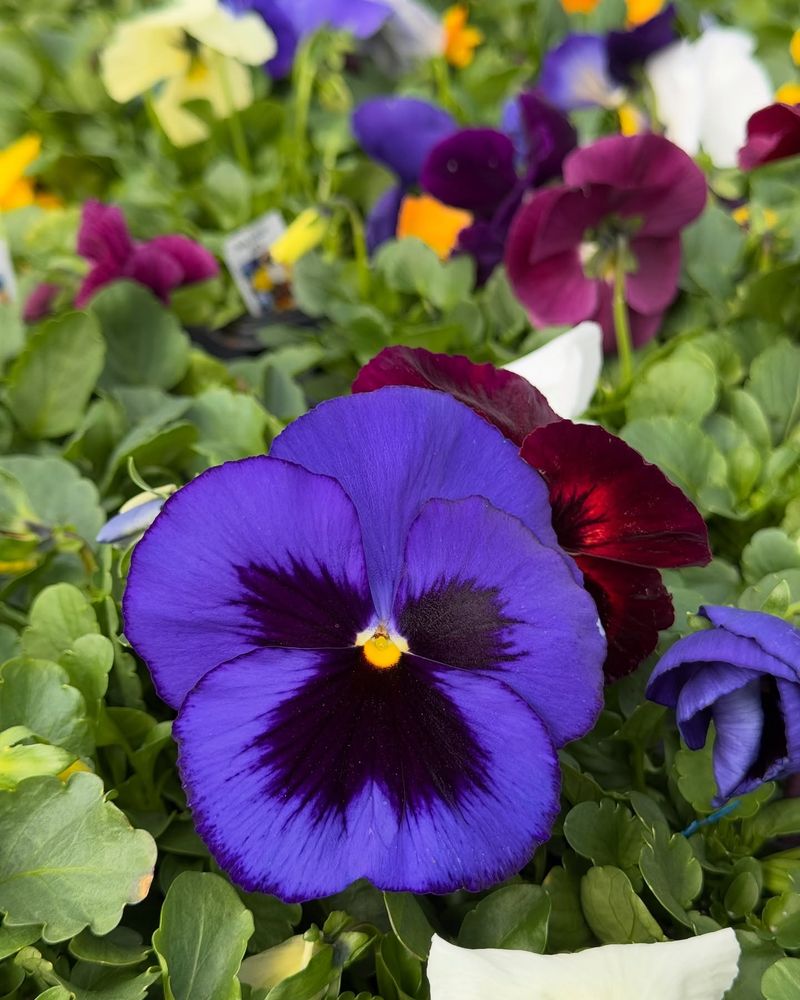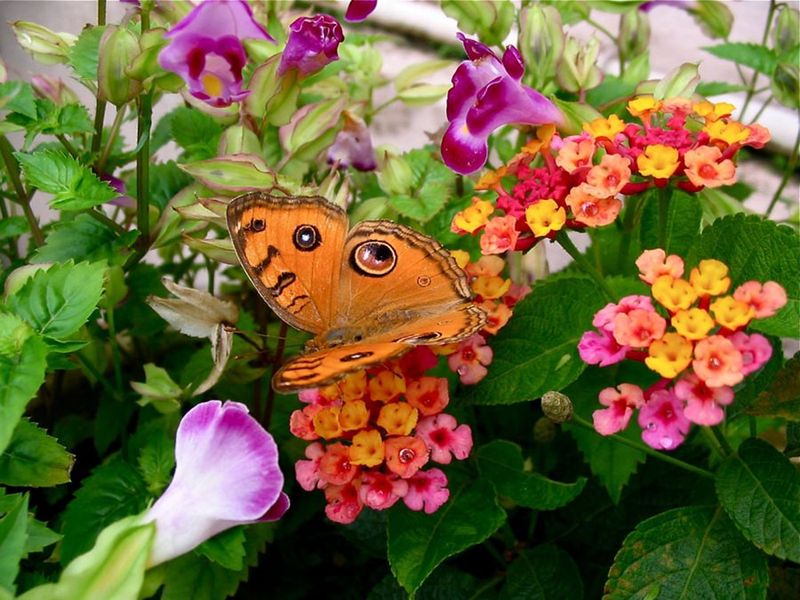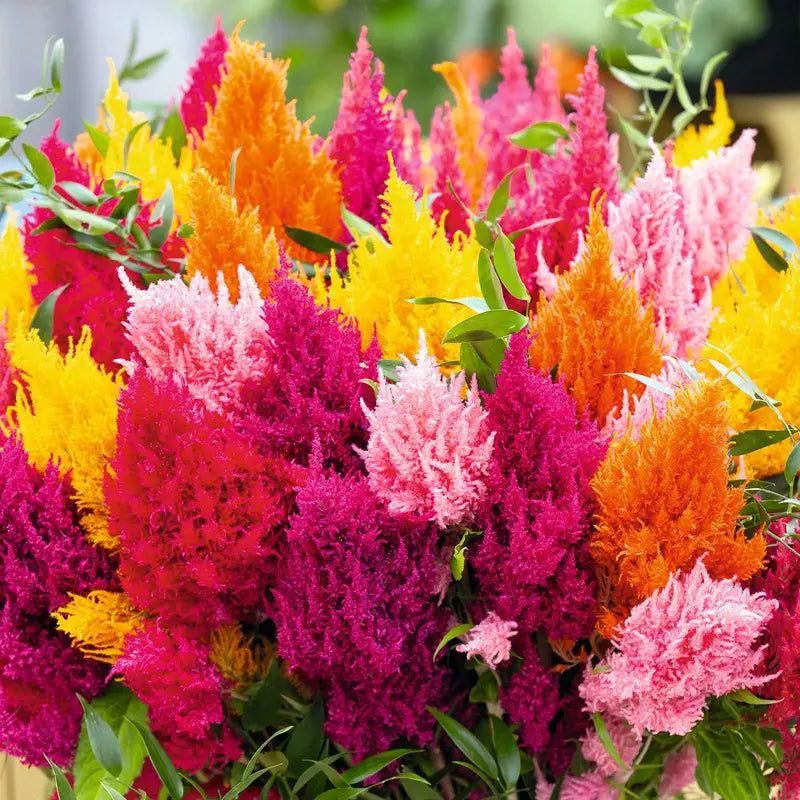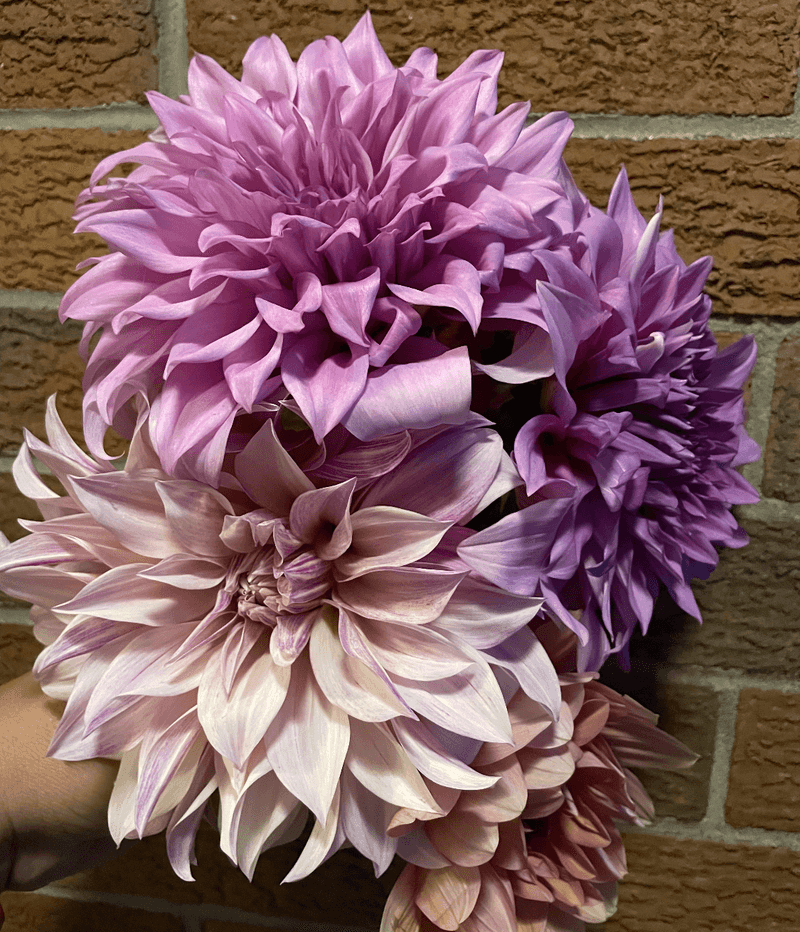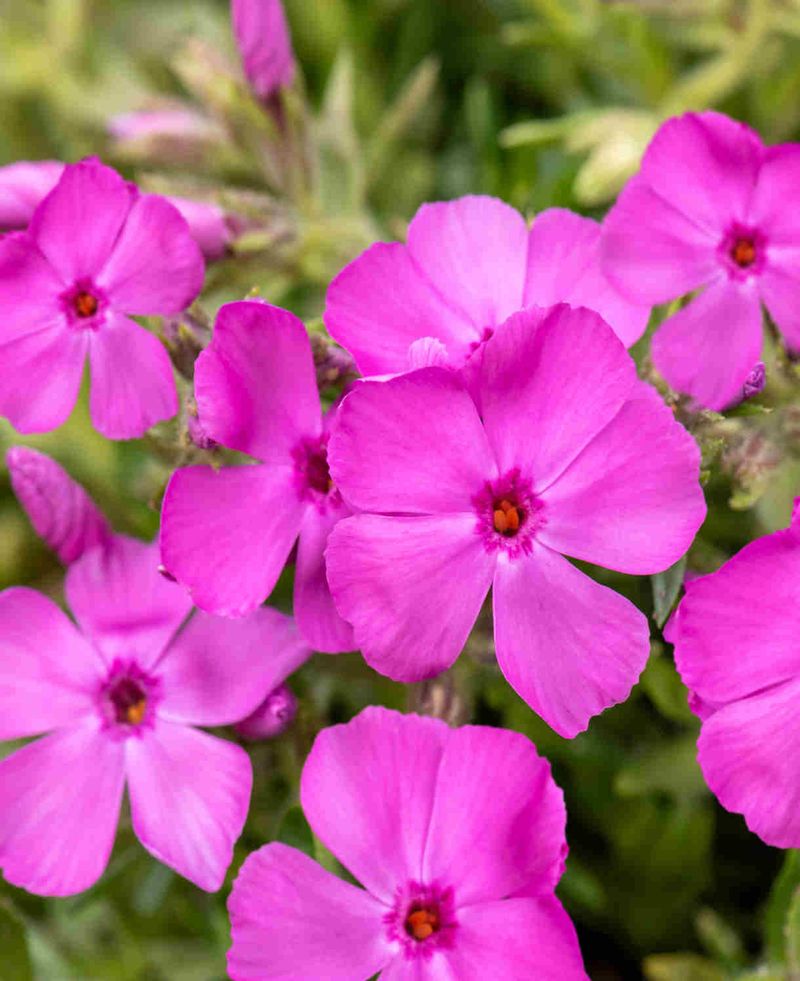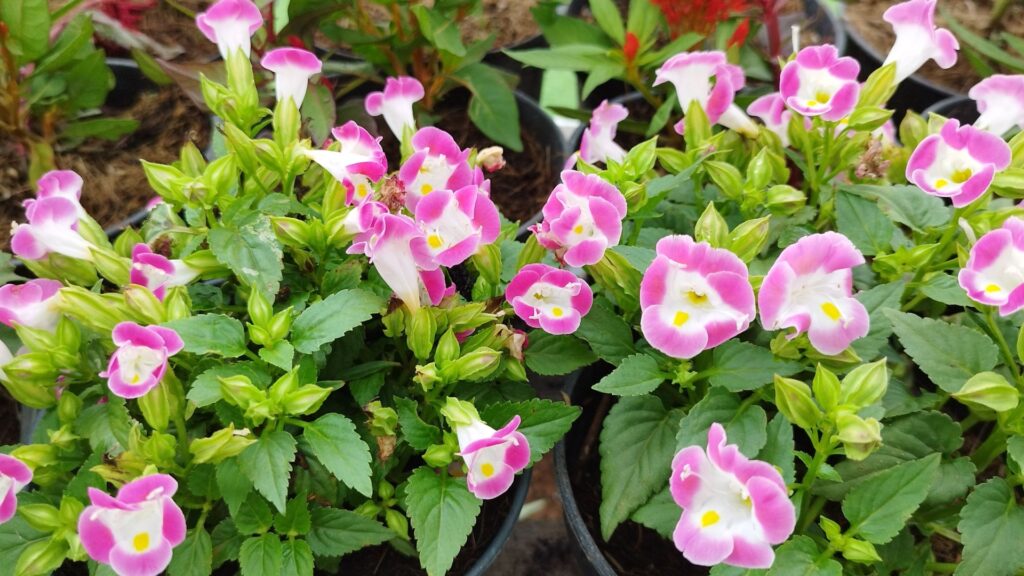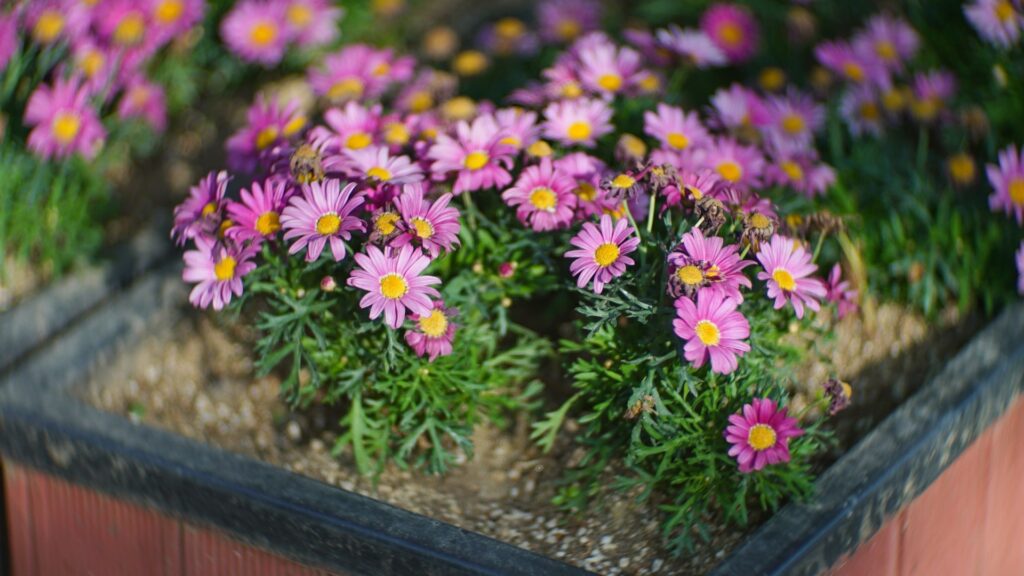Want instant color in tight spaces? Annuals in pots are the way to go. My tiny balcony turned into a floral escape with just a few containers and the right blooms.
The best part? You can move pots to chase the sun or dodge bad weather. Some flowers even prefer life in a pot!
Here are 17 top picks for container color—plus 5 that bloom with barely any effort.
1. Petunias – The Reliable Crowd-Pleaser
You’ll get months of continuous color from these pot-friendly favorites. I’ve grown petunias in everything from hanging baskets to window boxes, and they just keep pumping out blooms from spring until frost.
They come in practically every color except true blue, with varieties ranging from tiny blooms to dinner-plate sized flowers. Wave petunias are my personal go-to for cascading over pot edges.
Just give them well-draining soil and don’t let them dry out completely. A light trim mid-season prevents them from getting leggy and triggers a fresh round of flowering.
2. Marigolds – Sunshine In A Pot
Tough as nails and practically foolproof, marigolds have saved my container garden during hot, dry spells. Their golden, orange, and russet blooms add a punch of warm color that lasts for months.
French marigolds stay compact and neat in pots, while African varieties grow taller with larger blooms. I’ve noticed they actually perform better when slightly pot-bound rather than given too much space.
An unexpected bonus? Their strong scent naturally repels many garden pests. Deadhead spent blooms and they’ll reward you with non-stop flowers until the first frost.
3. Zinnias – Cut-And-Come-Again Color
My absolute favorite for both container color and cut flowers, zinnias deliver impressive blooms on sturdy stems. The more you cut, the more they produce – I’ve filled vases all summer from just three plants in a medium-sized pot.
Smaller varieties like ‘Profusion’ or ‘Zahara’ stay compact and tidy in containers. Their daisy-like flowers come in nearly every color of the rainbow, often with interesting patterns and petal formations.
Plant them in a sunny spot with rich potting soil. Unlike fussier flowers, zinnias actually prefer to dry out slightly between waterings, making them forgiving if you occasionally forget.
4. Calibrachoa (Million Bells) – Tiny Flowers, Huge Impact
Looking like miniature petunias on steroids, calibrachoa produces hundreds of small, trumpet-shaped blooms on trailing stems. I’ve had plants completely cover a hanging basket in a blanket of color that lasted from May through October.
Unlike their petunia cousins, million bells are self-cleaning – no deadheading required! The plants naturally shed spent blooms and keep producing new ones without any fuss.
They perform best with consistent moisture and regular feeding. I mix slow-release fertilizer into the potting soil at planting time, then supplement with liquid feed every two weeks for non-stop blooms.
5. Nasturtiums – Edible Beauty For Containers
Round, lily-pad leaves topped with spicy-sweet edible flowers make nasturtiums a double-duty container plant. I grow them in window boxes where their trailing habit creates a waterfall effect of greenery studded with jewel-toned blooms.
The flowers taste peppery and bright – perfect for adding to summer salads. Both leaves and blooms are edible, with colors ranging from pale yellow to deep mahogany red.
Unlike most flowering plants, nasturtiums actually bloom better in lean soil. Skip the fertilizer and let them get slightly dry between waterings for the most abundant flowering.
6. Sweet Alyssum – Fragrant Frothy Edges
Creating a cloud of tiny blooms that spill over pot edges, sweet alyssum brings both delicate beauty and honey-sweet fragrance to container gardens. I plant it along the rim of larger pots to soften the edges while taller plants take center stage.
The tiny four-petaled flowers come in white, purple, and pink, creating a lacy effect that complements practically any other plant. On warm evenings, their sweet scent is absolutely intoxicating.
Heat can sometimes slow flowering in midsummer, but a quick trim brings them right back. New heat-tolerant varieties like ‘Snow Princess’ power through summer without skipping a beat.
7. Geraniums (Pelargoniums) – Classic Container Workhorses
When I need guaranteed success in a sunny spot, I turn to geraniums. These classic container plants deliver bold clusters of flowers in reds, pinks, whites, and corals above distinctive rounded leaves.
Zonal geraniums grow upright with single or double blooms, while ivy geraniums trail beautifully over pot edges. Some varieties even offer scented foliage – my lemon-scented one releases its fragrance whenever I brush past.
Let them dry slightly between waterings and remove spent flowers to encourage more blooms. With minimal care, they’ll flower continuously from spring through fall.
8. Impatiens – Bringing Color To Shady Spots
For years, my north-facing balcony was a flower desert until I discovered impatiens. These shade-loving annuals produce non-stop blooms in spaces where other flowers struggle.
Traditional impatiens create mounds of flowers in white, pink, red, and lavender. New Guinea impatiens offer larger blooms and more sun tolerance, though they still appreciate afternoon shade in hot climates.
Keep the soil consistently moist but not soggy. A container with good drainage prevents root rot while allowing you to water frequently enough to keep these thirsty plants happy and blooming.
9. Begonias – Elegant Flowers For Sun Or Shade
Few container plants offer the versatility of begonias. I’ve grown them in everything from bright morning sun to deep shade, and they’ve performed beautifully in both situations.
Fibrous begonias create tidy mounds covered in small flowers, while tuberous begonias produce rose-like blooms that can reach 5 inches across. Dragon wing varieties combine the best of both with arching stems covered in abundant flowers.
They prefer evenly moist soil but hate wet feet. I water only when the top inch of soil feels dry to the touch, which prevents the rotting issues that can plague these otherwise easy-care plants.
10. Cosmos – Airy Elegance In Pots
Feathery foliage topped with daisy-like blooms gives cosmos a delicate, meadow-like charm that softens container arrangements. I’ve grown dwarf varieties like ‘Sonata’ in pots with stunning results – they stay compact while producing dozens of flowers.
The blooms come in white, pink, and various shades of red, often with contrasting centers. Bees and butterflies absolutely love them, turning my container garden into a pollinator paradise.
Plant them in full sun and don’t overfeed – too much fertilizer produces leggy plants with fewer flowers. Deadheading extends the blooming period from early summer until frost.
11. Portulaca (Moss Rose) – Heat-Loving Succulent Bloomer
During a brutal summer heatwave that fried most of my container plants, portulaca just kept blooming. These succulent annuals thrive in hot, dry conditions that would kill other flowers.
The rose-like blooms come in neon bright colors – hot pink, orange, yellow, and red – creating a tropical feel. Flowers open in sunshine and close at night or on cloudy days.
Plant in well-draining soil and place in your sunniest spot. I water mine deeply once a week, then let them dry out completely. Their low-growing, spreading habit makes them perfect for pot edges or hanging baskets.
12. Snapdragons – Vertical Drama For Containers
Adding height and architectural interest to container arrangements, snapdragons produce spikes of uniquely shaped flowers that children love to pinch open (they really do snap!). I use them as centerpieces in larger pots, surrounded by lower-growing flowers.
Dwarf varieties stay under 12 inches, while taller types can reach 3 feet. The color range is extensive – pastels, brights, and bicolors that bloom in spring and fall.
They prefer cooler weather, often taking a break during summer’s heat before reblooming when temperatures drop. Regular deadheading encourages more flower spikes throughout the growing season.
13. Lobelia – Cascades Of Tiny Blooms
Looking like a river of tiny blue, white, or purple flowers, trailing lobelia creates spectacular spilling effects in containers. I pair it with upright plants where it can cascade over the edges like a flowering waterfall.
The small, delicate blooms appear by the hundreds, completely covering the plant in a blanket of color. Blue varieties offer that rare true blue that’s hard to find in the flower world.
Lobelia prefers cooler temperatures and consistent moisture. In hot climates, it may take a break during summer’s peak heat, but often returns for a second flush of blooms when temperatures cool in fall.
14. Verbena – Long-Lasting Clusters Of Color
Flat clusters of small, star-shaped flowers make verbena a standout in my container garden. The blooms appear in tight groupings that create bold splashes of color from a distance.
Trailing varieties like ‘Superbena’ cascade beautifully over pot edges, while upright types create tidy mounds. Their extended blooming period – often from spring through fall – provides exceptional value from a single planting.
Plant in full sun and allow soil to dry slightly between waterings. An occasional trim prevents legginess and stimulates fresh growth and more flowers, keeping plants looking full and vibrant all season.
15. Pansies – Cool-Season Container Stars
With their cheerful “faces” and remarkable cold tolerance, pansies extend my container gardening season by months. I plant them in early spring when little else is blooming, and again in fall for color that often lasts through mild winters.
Modern varieties come in nearly every color imaginable, from pure white to nearly black, often with contrasting “whiskers” or blotches. Their edible flowers add visual pop to salads and desserts.
While they fade in summer heat, few plants can match their performance in cool weather. Regular deadheading keeps them flowering abundantly during their peak seasons.
16. Sunflowers (Dwarf Varieties) – Sunshine In A Pot
Compact sunflower varieties have completely changed what’s possible in container gardens. Varieties like ‘Teddy Bear’ and ‘Sunspot’ grow just 12-30 inches tall while producing the same cheerful yellow blooms as their taller cousins.
The fuzzy centers attract beneficial insects while the bright petals create instant visual impact. Some varieties produce multiple branches with dozens of smaller flowers rather than a single large bloom.
Plant in full sun using a pot at least 12 inches deep to accommodate their roots. Their fast growth means you’ll see flowers within 60 days of planting – perfect for impatient gardeners like me.
17. Lantana – Heat-Loving Color Clusters
When summer temperatures soar, lantana keeps blooming while other container plants wilt. The multi-colored flower clusters often feature a mix of colors that change as they age, creating a kaleidoscope effect.
Trailing varieties work beautifully in hanging baskets, while more upright types create mounds of color in standard containers. Butterflies absolutely adore the nectar-rich blooms – my lantana pots become butterfly magnets by midsummer.
Full sun and well-draining soil keep them happy. Unlike thirstier annuals, lantana actually performs better with slightly dry conditions once established, making it perfect for gardeners who occasionally forget to water.
18. Celosia – Uniquely Textured Blooms
Adding fascinating texture to container arrangements, celosia produces velvety plumes or crested flowers that look unlike anything else in the garden. The flame-like or brain-like blooms (depending on variety) hold their color for weeks, even in hot weather.
Colors range from bright red and orange to pink, yellow and purple. I especially love the contrast of their unusual flowers against more traditional blooms in mixed containers.
Plant in full sun and well-draining soil. They’re surprisingly drought-tolerant once established, though regular watering produces the lushest growth. Many varieties also make excellent dried flowers at season’s end.
19. Dahlias (Bedding Types) – Low-Maintenance Bloomers
Smaller bedding dahlias have become my go-to for easy summer color in containers. Unlike their larger cousins that require staking and special care, these compact varieties grow just 12-18 inches tall while producing dozens of blooms.
The daisy-like or semi-double flowers come in bright, clear colors that hold up well in summer heat. Varieties like ‘Figaro’ and ‘Goldalia’ start flowering early and continue non-stop until frost.
Plant in rich, well-draining soil in full to part sun. Regular deadheading encourages more flowers, though many newer varieties are self-cleaning. Just water consistently and enjoy the show!
20. Phlox (Annual) – Carpet Of Starry Blooms
Annual phlox creates a living carpet of star-shaped flowers that spill beautifully over container edges. The plants stay low but spread wide, making them perfect for softening the edges of mixed plantings.
The small five-petaled flowers come in white, pink, purple, and bicolors, often with contrasting centers. Some varieties, like ‘Twinkle Star’, feature unique star patterns that add visual interest up close.
They bloom best in full sun but appreciate afternoon shade in hot climates. I’ve found they’re quite forgiving about watering as long as they don’t completely dry out for extended periods.
21. Torenia (Wishbone Flower) – Color For Shade And Humidity
When the heat and humidity roll in, torenia steps up where many shade-loving annuals falter. With its trumpet-shaped flowers in vivid shades of purple, blue, pink, and yellow, this plant brings surprising brightness to darker corners of my porch and patio.
Often called the “wishbone flower” due to the unique shape inside each bloom, torenia grows in a tidy, mounding habit that’s ideal for containers and window boxes. I love how it fills out a pot with dense foliage and continuous flowers all season.
It thrives in part to full shade and enjoys consistently moist soil. Unlike many shade plants that can fade in summer’s humidity, torenia keeps blooming without complaint—making it a dependable choice for sultry climates.
22. Brachyscome (Swan River Daisy) – Soft Spills Of Pastel Petals
If you’re after a gentle, cottage-garden look in your containers, brachyscome is a hidden gem. These dainty daisies bloom in soft lavender, white, and pink shades above fine, fern-like foliage that spills beautifully over pot edges.
I use them in mixed containers where their airy structure complements bolder flowers, or plant them solo for a pastel pop that lasts from early summer to frost. Despite their delicate appearance, they’re surprisingly tough and drought-tolerant once established.
Give them full sun and well-draining soil, and they’ll flourish with minimal upkeep. Occasional deadheading keeps them blooming non-stop, though many varieties are self-cleaning—a lovely bonus for low-maintenance gardeners.

